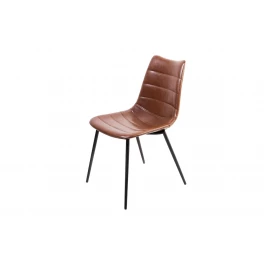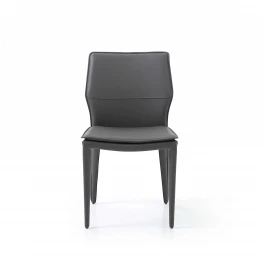Whether you want to put the last piece into place in a newly designed kitchen or you’re ungrading your kitchen without a complete remodel, you need to know how to choose patterns for backsplash tiles.
Nothing will finish off or refresh a kitchen more completely than a tile backsplash. A little tile style creates a lot of kitchen style.
The key to just the right kitchen backsplash isn’t only in choosing the tile styles and colors themselves but also in how you put the tiles together on your walls. Do you stack them, stagger them, turn them on end, zigzag them? The options are nearly endless.
But don’t let your choices overwhelm you. Picking the right patterns for backsplash tiles, patterns that work for you, can be simplified. You just need to know what you want the backsplash to do for your kitchen.
Here are seven backsplash design ideas that will show how to let your goal for your backsplash guide your pattern choices.
Stack for Sleek
One of the simplest ways to set up a tile backsplash is to vertically stack tiles of the same shape and color. This tile pattern creates a clean design that will contribute to a sleek look in your kitchen. Particularly well-suited to modern or industrial style kitchens, the stacked tile pattern is linear and orderly while at the same time relaxed and unpretentious. Stack your monochromatic tiles if you want your backsplash to give your kitchen a tidy and pure aesthetic.

Photo by Artazum on Shutterstock
Herringbone for Highlights
A zigzag tile pattern, otherwise known as a herringbone pattern, is a strong pattern that stands out. If the rest of the surfaces in your kitchen are severe in their simplicity of color or texture, you’ll want your backsplash to create some highlights in the room. As highlights, these tiles will pick out the other elements in the room and emphasize the connection between them. Use this pattern if you want your kitchen to have crisp contrasts that at the same time look timeless and sophisticated.

Photo by ThomasPhoto on Shutterstock
Lay it for Light
One of the most traditional tile patterns is the brickwork layout pattern, often called in the tile-laying industry, “the running bond tile pattern.” This tile pattern is one of the most common of the kitchen backsplash subway tile patterns.

Photo by KUPRYNENKO ANDRII on Shutterstock
Hiding imperfections like crooked walls or uneven surfaces, this tile pattern unifies an area, which also seems to open it up. When you lay your tiles in this running bond configuration, the staggered tile edges remove your focus from individual tiles. The resulting cohesiveness creates an illusion of lightness. If you want your backsplash to brighten and expand your kitchen space, this pattern is for you.
Draw it in with Diamonds
What’s the easiest way to dress up a square? Rotate it and turn it into a diamond shape.

Photo by Artazum on Shutterstock
The diamond tile pattern is nearly as eye-catching as real diamonds themselves. So if you’re looking for a tile pattern that draws the eye toward a focal point, create a diamond-patterned backsplash. This backsplash will grab attention and create a look-at-me moment in your kitchen. You can use this pattern for a whole backsplash because of its intense eye-catching effect.
Marry with Mosaic
Most kitchens have multiple color hues. You’re probably going to have separate colors for cabinets, countertops, paint, window coverings, and appliances. If these colors are very close together, they’ll join up naturally. But if you’ve chosen a lot of contrasting hues, you need something to tie everything together. A mosaic backsplash pattern will do that for you. Simply choose a mosaic pattern that includes all the other colors you’ve brought into your kitchen, and voila! You’ll have a beautifully blended space.

Photo by Vladeep on Shutterstock
Alternate for Attitude
Feeling sassy and you want your kitchen to reflect that sass? A color alternating tile pattern can help you out.

Photo by Daria Minaeva on Shutterstock
Whether you use squares, rectangles, or some other tile shape, creating a checkerboard-inspired alternating color scheme will inject energy and personality into your kitchen. If you want to create a kitchen that projects lively vitality, this tile pattern will get the job done.
Progress for Pop
A tile pattern that’s fun to create and has so many variations that your creativity will have plenty of room to play is a pattern of progressively increasing color. Placed against a one-color backdrop, this pattern has lines of contrasting colored tiles. The lines advance from thicker to thinner, moving up or down the backsplash.

Photo by nazarovsergey onShutterstock
To create this effect, set up a composition of stacked or alternating colored tiles over three rows of tile. Above that, place three or four rows of one-color tiles. Then place a contrasting tile pattern along two rows. Again, place three or four rows of one-color tiles above that. Finally, place a contrasting tile pattern along one row. Finish off with one-color tiles from that point to the upper or lower edge of the backsplash (depending on which way you have the color progressing). These progressing lines will run through the length of the backsplash, and they’ll result in a pop of color and texture that will spice up your kitchen.
This tile pattern has a bit of a Mediterranean aesthetic, and it’s a great choice if Mediterranean cooking is your thing. Whether you want to feel transported to Spain, South America, or Morocco, a progressive tile pattern will help set that adventurous mood in your kitchen. And just like that, you’ll be able to pop into your favorite culture and whip up cuisine to match.
Whether you use these tile pattern ideas or come up with your own, hopefully, these ideas have demonstrated how you can choose your backsplash patterns purposefully so your kitchen can be a proud display of whatever design aesthetic you wish.



























